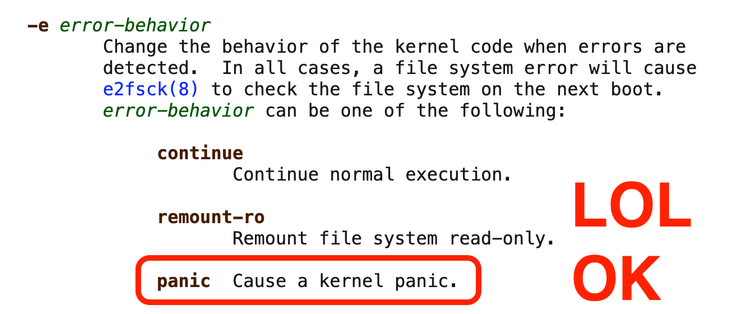Back when I was poking around with filesystem fuzzing stuff years back, I noticed something odd:
An EXT filesystem can tell the Linux OS how it should behave "if" the filesystem is corrupt, including triggering a kernel panic. In a world where USB thumb drives exist, this seems... not ideal.
Let's see what happens if we plug such a mass storage device into a fully patched Chromebook in 2024...
Oh.



 🔜why [☎4236]
🔜why [☎4236]